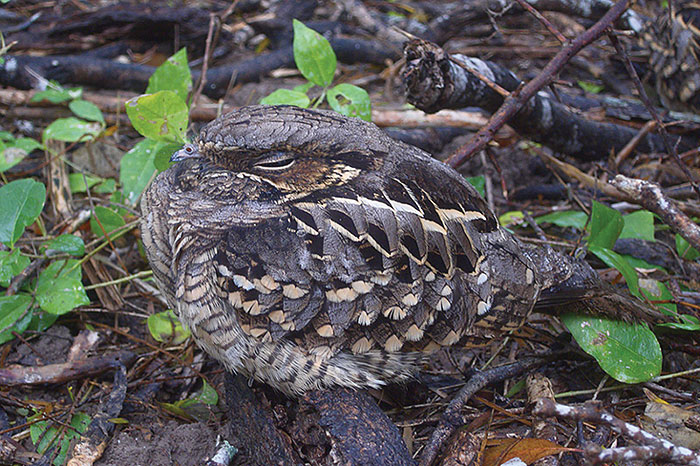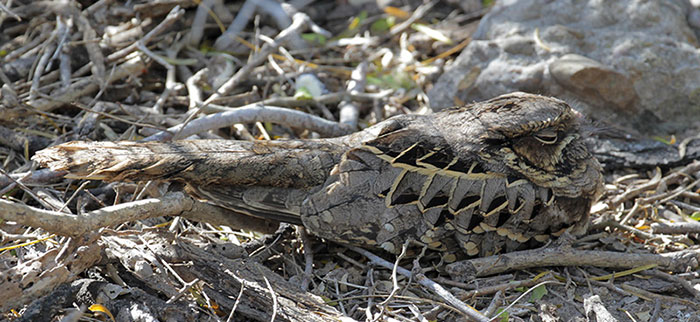With a range extending north from South America, the Common Paraque reaches the northern extent of its range in South Texas. It is non-migratory, unlike other North American nightjars. The plumage of Common Paraques offers excellent camouflage, and they typically remain motionless at the approach of a predator to avoid detection, only flushing at the last moment if it is required for escape.
Common Parauque eggs are rather brightly colored and would be obvious to predators, so parauques are careful to keep them incubated at all times. Heavy rains and fires from slash and burn agricultural practices destroy some nests.
On this page
Description of the Common Pauraque
BREEDING MALE
The Common Pauraque is mostly patterned in cryptic brown with a long, rounded, grayish tail. It has a white throat and white patches near the outer edges of its wings.
White patches in tail feathers.

Female
Very little white in tail feathers.
Seasonal change in appearance
None.
Juvenile
Similar to adults.
Habitat
Woodlands and open lowland areas.
Diet
Insects.
Behavior
Forages by flying from a perch to capture flying insects. Active early evening.
Range
Occurs from south Texas south to South America.
Fun Facts
Common Pauraques seldom fly more than about 10 feet off the ground.
Common Pauraques are most active at dawn and dusk.
Vocalizations
The song consists of a distinctive, hoarse whistle.
Similar Species
White wing bands and long tail distinguish it from the Common Poorwill, and the rounded shape of the tail distinguishes it from nighthawks.
Nesting
The nest is merely eggs laid in dead leaves on the ground.
Number: 2.
Color: Buff or pinkish with darker markings.
Incubation and fledging:
– Young hatch at 19-20 days.
– Young fledge (leave the nest) at an unknown age after hatching but remain with the adults for some time.


